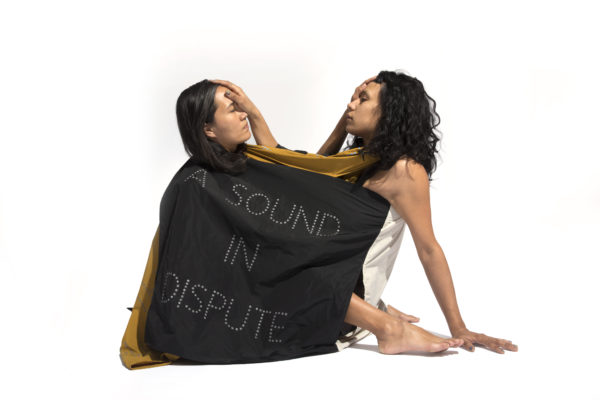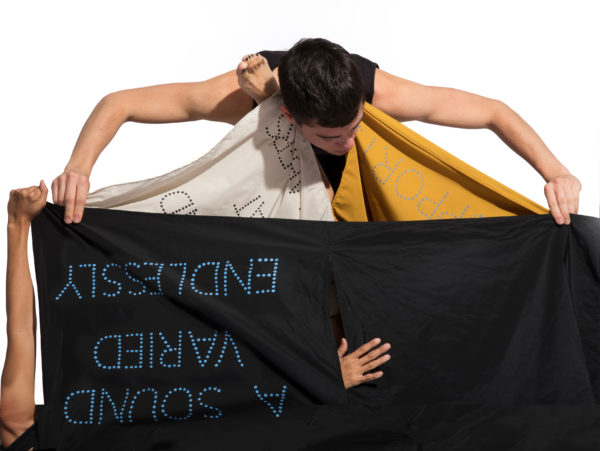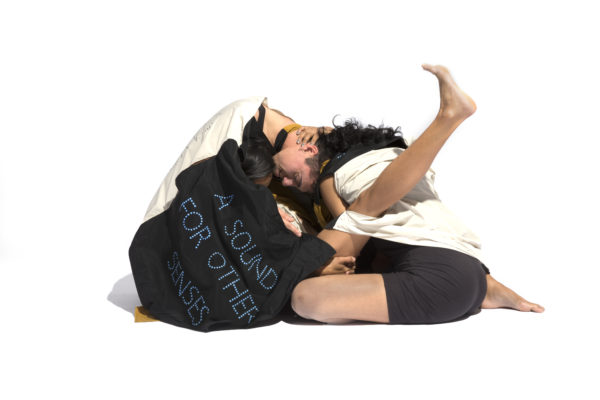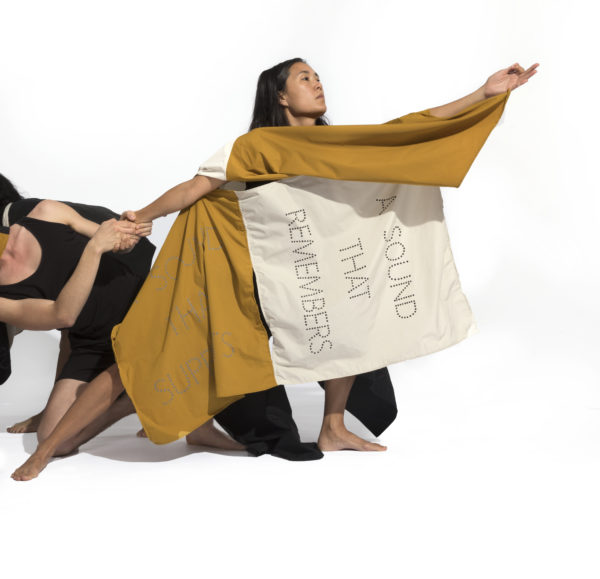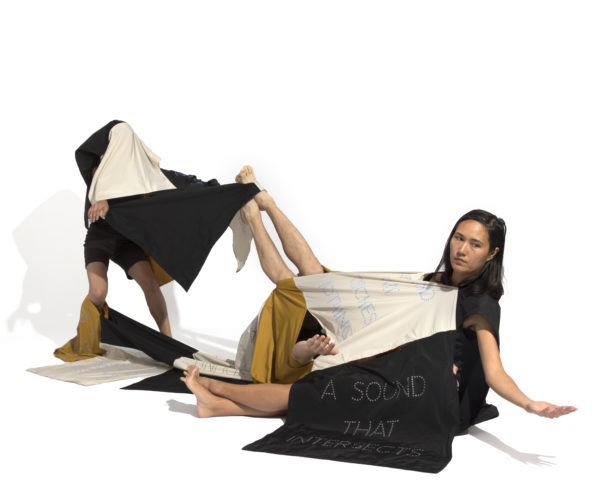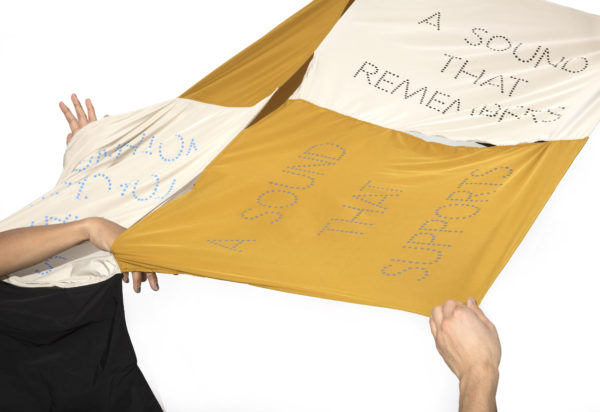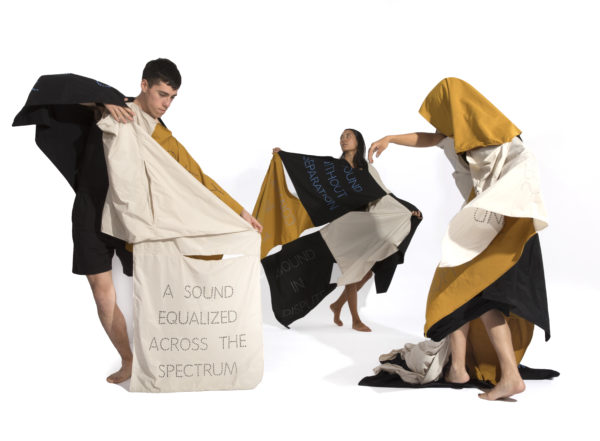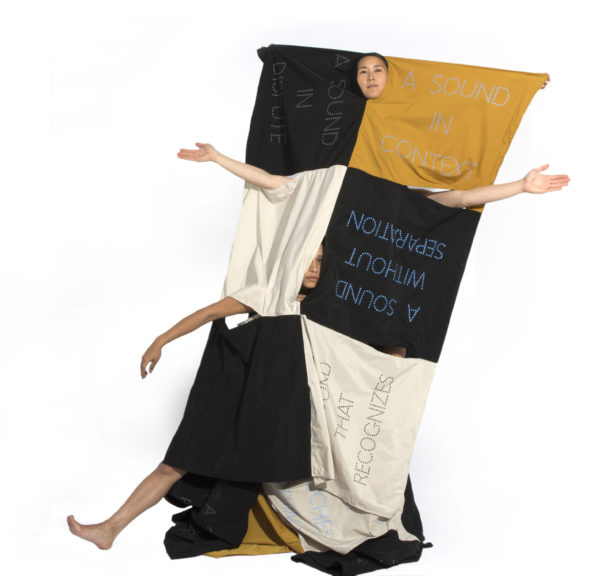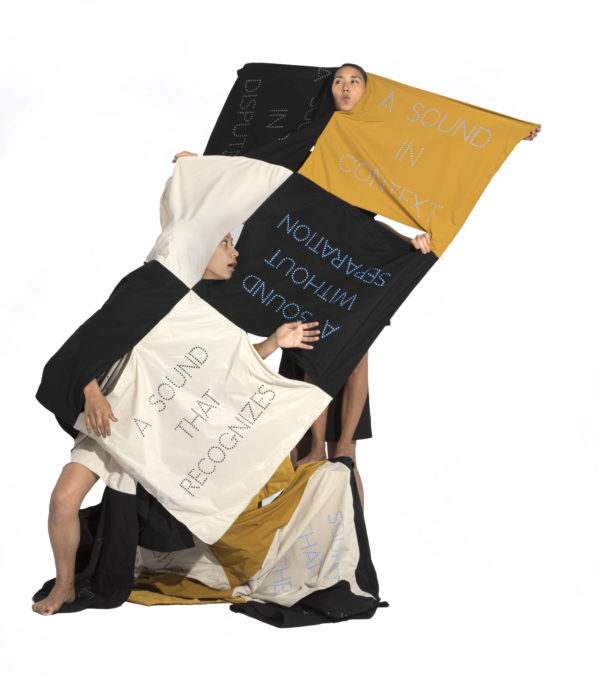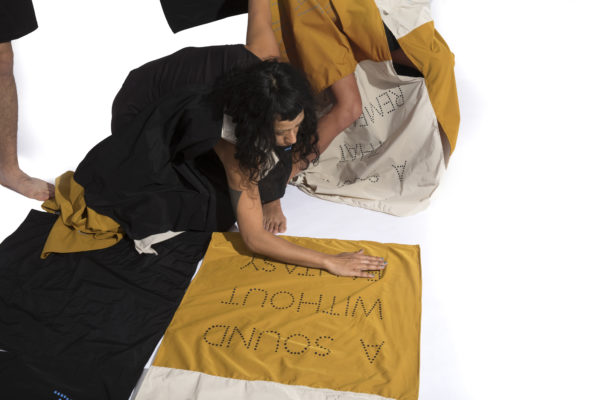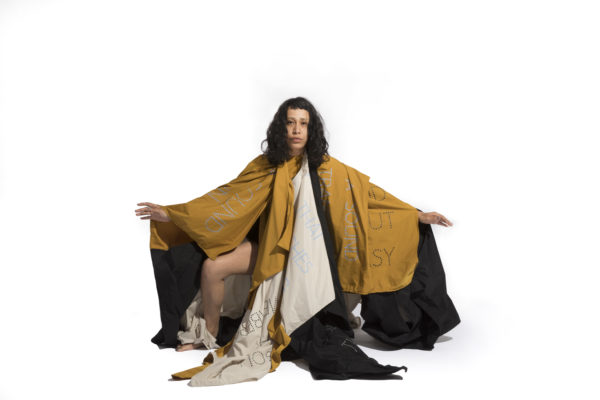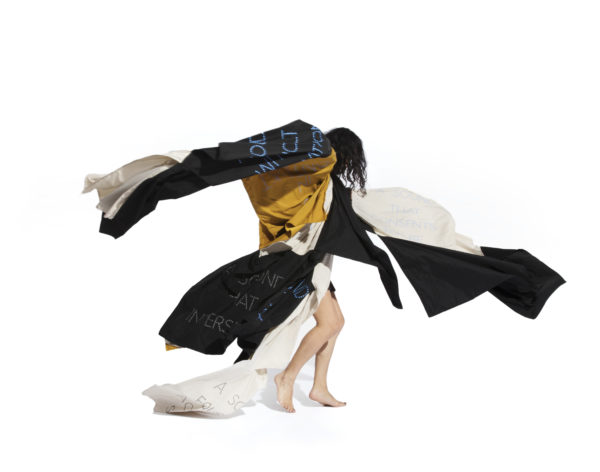Populations interact, learn a language, learn difference. Harmonize, de-harmonize / socialize, de-socialize. Form tableaux (images) as a group, form compromises. Observe, witness, describe a scene. Change roles, alienate and modify, step in and out of a system, agree or disagree. In every thought: equality, access, and context.
A score for a group of three performers to discover the conditions required for a new music. By constructing a series of “images,” with descriptions of sounds painted onto costumes, the performers work through these conditions as individuals, interacting, and as a group—solo, duo, and trio; performer, ensemble, and audience.
A sound that supports
A sound that intersects
A sound that remembers
A sound that touches nothing
A sound that is toxic, becoming clean
A sound that curves
A sound translated simultaneously
A sound for other senses
A sound that consents to be
A sound equalized across the spectrum
A sound without fixed identity
A sound without fantasy
A sound varied endlessly
A sound without separation
A sound that recognizes
A sound in context
A sound in dispute
To begin: two of the three group members form one of the images described below. This constructed image can be still (a tableau), or moving (a dramatization, gesture, or activity), with sound or silent. The painted descriptions of sounds, displayed or obscured, articulate the theme of each new image.
During this process, the remaining group member acts as an observer. The observer circles an image, describes what they are able to see, asks questions, seeks clarity, and decides how to modify an image into a more stable form. The observer physically adjusts and modifies the relationships between the other performers, then chooses how to join the constructed image:
- Switch places with a performer currently in an image (this person then steps out to become an observer)
- Mimic a performer who is currently in an image
- Insert oneself between other performers
- Make an independent image in response to the first image
Once all members of the group are included in a constructed image, hold for a while. If anyone feels that their position in an image is not stable, they should break away to become an observer, repeating the above process of observing, modifying, and joining, until the group agrees that a truly stable image has been created. Once agreement has been reached, begin the process again with a new image.
All discussion and planning should be carried out in an open and transparent manner with the audience. If something doesn’t work, try it again in a different way. When changing positions, step into the role of observer first before rejoining an image.
First image
.
unity / dissolving / appropriating / absorbing / many-as-one
Second image
:
support / intervention / guiding / assisting / bridging / in-between
Third image
∴
frictionless motion / autonomy / individuation / a solitary interpretation
Commissioned by The Los Angeles Philharmonic for Past / Forward: The LA Phil at 100.
Inspired by strategies detailed in Augusto Boal’s Theatre of the Oppressed and Games for Actors and Non-Actors and Paul Ryan’s Threeing.
Performed by Maria Maea, Peter Hernandez, and Jennie MaryTai Liu, photographs by Zen Sekizawa.
